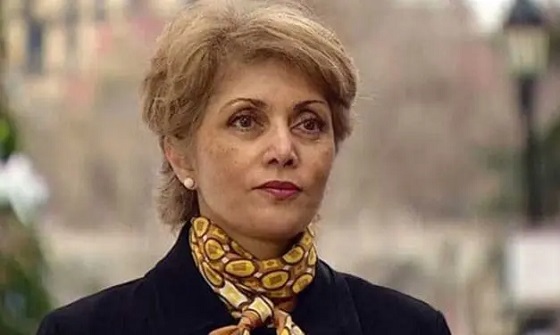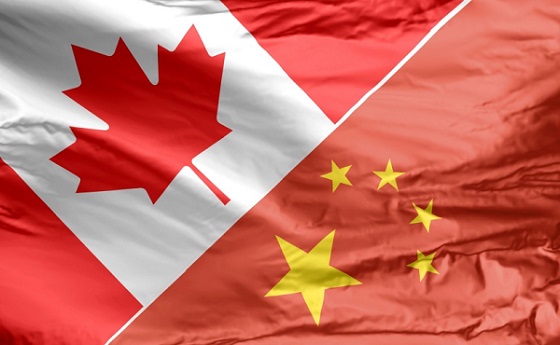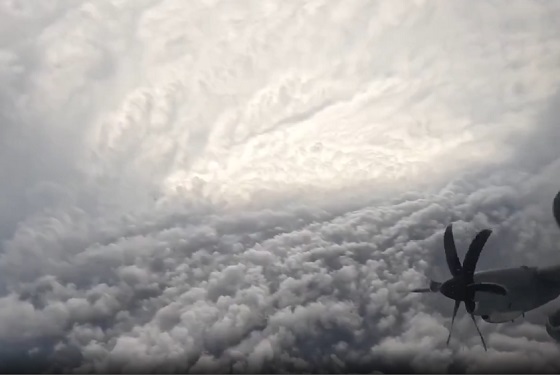Alberta
April 30th: Premier Kenney releases Alberta’s Relaunch Strategy

From the Province of Alberta
Below is the full release and information on Alberta’s phased relaunch plan
Alberta’s safely staged COVID-19 relaunch
A phased relaunch will put Albertans’ safety first as we gradually reopen closed businesses and services and get people back to work.
“I’m confident Albertans will approach relaunch with the same adaptability and resilience they have shown throughout the COVID-19 pandemic. We will move forward together with care and common sense, knowing tough times are still ahead. We will support and protect vulnerable Albertans and keep them safe as we build our province back up one stage at a time.” Jason Kenney, Premier
It is because Albertans have acted responsibly, respecting public health advice, that we have been able to limit the spread of COVID-19, keep localized outbreaks within the capacity of our health-care system, and now take the first incremental steps to reopen some businesses and services.
Early actions
The plan to move forward requires careful and ongoing monitoring and respecting all guidelines outlined by the chief medical officer of health:
- Alberta Health Services will resume some scheduled, non- urgent surgeries as soon as May 4.
- Dental and other health-care workers, such as physiotherapists, speech language pathologists, respiratory therapists, audiologists, social workers, occupational therapists, dieticians and more, will be allowed to resume services starting May 4, as long as they are following approved guidelines set by their professional colleges.

Alberta Parks’ online reservation system will be available May 14th. Photo by Government of Alberta
Recognizing the role that access to the outdoors and recreation in the outdoors plays to Albertans’ sense of well- being, access to provincial parks and public lands will be re- opened using a phased approach, beginning with:
- Vehicle access to parking lots and staging areas in parks and on public lands opening May 1.
- Opening a number of boat launches in provincial parks on May 1 and working to have them all open by May 14. Check albertaparks.ca for the status of boat launches.
- Government is working hard to make campsites available as soon as possible, with the goal to have as many open as possible by June 1 so Albertans can enjoy our parks while adhering to current health orders. At this time, sites are open to Albertans only. Check albertaparks.ca for updates.
- Group and comfort camping will not be offered. Campground facility access restrictions to areas such as showers, picnic and cooking shelters will also be posted to albertaparks.ca.
- Alberta Parks’ online reservation system will be available May 14 to book site visits beginning June 1. Out-of-province bookings will not be processed.
- No washrooms or garbage pickup will be available within provincial parks at this time. These services will be available as soon as Alberta Environment and Parks brings staff back. These seasonal positions represent an important opportunity for Albertans to secure employment during challenging economic times.
- Fire bans in parks, protected areas and the Forest Protection Area remain in place.
- No off-highway vehicle restrictions are currently in place. Local restrictions may be required if the risk for wildfires increases.
- Private and municipal campgrounds and parks can open with physical distancing restrictions, under their own local authority.
- Golf courses can open on May 4, with restrictions including keeping clubhouses and pro shops closed. On-site shops and restaurants can open in stage one, consistent with other businesses and retailers.

Golf courses can open May 4, with restrictions including keeping clubhouses and pro shops closed. (Photo Courtesy/City of Edmonton)
Requirements to move to next stage; Additional restrictions will be lifted in stages when safe.
Before we move to stage one, several safeguards will be put in place:
- Enhancing our nation-leading COVID-19 testing capacity at the highest level in Canada.
- Robust and comprehensive contact tracing, aided by technology, to quickly notify people who may have been exposed.
- Support for those who test positive for COVID-19, to enable isolation and effectively contain the spread.
- Stronger international border controls and airport screening, especially for international travellers.
- Rules and guidance for the use of masks in crowded spaces, especially on mass transit.
- Maintaining strong protections for the most vulnerable, including those in long-term care, continuing care and seniors lodges.
A rapid response plan is in place in the event of possible outbreaks of COVID-19. This includes outbreak protocols to quickly identify close contacts in order to stop spread, making testing widely available including testing those without symptoms in outbreak settings, and providing temporary housing for isolation and other necessary supports for anyone at risk.
Physical distancing requirements of two metres will remain in place through all stages of relaunch and hygiene practices will continue to be required of businesses and individuals, along with instructions for Albertans to stay home when exhibiting symptoms such as cough, fever, shortness of breath, runny nose, or sore throat.

Chief Medical Officer of Health Dr. Deena Hinshaw speaks about the current COVID-19 situation in Alberta.
“There are signs that our collective efforts of physical distancing, good hygiene practices, and staying home when advised are helping to slow the spread. However, we must guard against complacency and be patient to ensure the sacrifices we have already made to contain the virus are not wasted by carelessness as we gradually reopen businesses and services.” Deena Hinshaw, chief medical officer of health
Further opening in stages
Progress to Stage 1 will occur once health measures are achieved to the satisfaction of the government based on the advice of the chief medical officer of health, as early as May 14.
Stage 1 highlights:
With increased infection prevention and controls, to minimize the risk of increased transmission of infections, some businesses and facilities can start to gradually resume operations as early as May 14:
- Post-secondary institutions will continue to deliver courses, however how programs are delivered – whether online, in-person, or a blend – will be dependent on what restrictions remain in place at each relaunch phase.
- The use of masks will be strongly recommended in certain specific crowded public spaces, like mass transit, that do not allow for physical distancing (two metres apart).
Still not permitted in stage 1:
- Gatherings of more than 15 people. (Gatherings of 15 people or fewer must follow personal distancing and other public health guidelines.)

Gatherings of more than 15 people. (Gatherings of 15 people or fewer must follow personal distancing and other public health guidelines.)
- Arts and culture festivals, major sporting events, and concerts, all of which involve close physical contact.
- Movie theatres, theatres, pools, recreation centres, arenas, spas, gyms and nightclubs will remain closed.
- Visitors to patients at health-care facilities will continue to be limited.
- In-school classes for kindergarten to Grade 12 students.
Recommendations:
- Non-essential travel, especially travel outside the province, is not recommended.
- Remote working is advised where possible.
Stage 2 highlights:
- Timing of this stage will be determined by the success of Stage 1, considering the capacity of the health-care system and continued limiting and/or reduction of the rate of infections, hospitalization and ICU cases.
- Will allow additional businesses and services to reopen and resume operations with two metre physical distancing requirements and other public health guidelines in place. This includes:
- Potential kindergarten to Grade 12 schools, with restrictions.
- More scheduled surgeries, including backlog elimination.
- Personal services, such as artificial tanning, esthetics, cosmetic skin and body treatments, manicures, pedicures, waxing, facial treatments, massage and reflexology.
- Permitting of some larger gatherings (number of people to be determined as we learn more about the levels of risk for different activities) in some situations.
- Movie theatres and theatres open with restrictions.
Visitors to patients at health-care facilities will continue to be limited.
Still not permitted in stage 2:
- Nightclubs, gyms, pools, recreation centres, and arenas will remain closed.
- Arts and culture festivals, concerts, attendance at major sporting events and other mass gatherings will continue to not be permitted.

Major sporting events and other mass gatherings will continue to not be permitted in Stage 2. Stage 3 dates are TBA. Dale McMillan Photography
Recommendations:
- Non-essential travel is not recommended.
Stage 3 highlights:
Timing of this stage is to be determined based on the success of stages 1 and 2 and will involve:
- Fully reopening all businesses and services, with some limited restrictions still in place.
- Permitting larger gatherings (number of people to be determined).
- Permitting arts and culture festivals, concerts and major sporting events with some restrictions.
- Permitting nightclubs, gyms, pools, recreation centres and arenas to reopen with restrictions.
- Resuming industry conferences with restrictions.
- No restrictions on non-essential travel.

Under Stage 3 there will be no restrictions on non-essential travel. Tom Braid Photo
Quick facts
- Relaunch stages will also include an evaluation and monitoring period to determine if restrictions should be adjusted up or down. Triggers that will inform decisions on the lessening or tightening of restrictions include hospitalizations and intensive care unit (ICU) occupancy.
- Confirmed cases and rates of new infections will be monitored on an ongoing basis to inform proactive responses in localized areas of the province.
- Decisions will be applied at both provincial and local levels, where necessary. While restrictions are gradually eased across the province, an outbreak may mean that they need to be strengthened temporarily in a local area.

- Faith-based organizations are an essential part of the lives of Albertans. They continue to be able to practice, subject to public health direction, including mass gatherings and physical distancing. Government is working with faith-based organizations to learn from past outbreaks and provide guidance related to specific practices including singing and other traditions to ensure safety while supporting social connection.
More features om www.todayville.com
Alberta
Canada’s heavy oil finds new fans as global demand rises

From the Canadian Energy Centre
By Will Gibson
“The refining industry wants heavy oil. We are actually in a shortage of heavy oil globally right now, and you can see that in the prices”
Once priced at a steep discount to its lighter, sweeter counterparts, Canadian oil has earned growing admiration—and market share—among new customers in Asia.
Canada’s oil exports are primarily “heavy” oil from the Alberta oil sands, compared to oil from more conventional “light” plays like the Permian Basin in the U.S.
One way to think of it is that heavy oil is thick and does not flow easily, while light oil is thin and flows freely, like fudge compared to apple juice.
“The refining industry wants heavy oil. We are actually in a shortage of heavy oil globally right now, and you can see that in the prices,” said Susan Bell, senior vice-president of downstream research with Rystad Energy.
A narrowing price gap
Alberta’s heavy oil producers generally receive a lower price than light oil producers, partly a result of different crude quality but mainly because of the cost of transportation, according to S&P Global.
The “differential” between Western Canadian Select (WCS) and West Texas Intermediate (WTI) blew out to nearly US$50 per barrel in 2018 because of pipeline bottlenecks, forcing Alberta to step in and cut production.
So far this year, the differential has narrowed to as little as US$10 per barrel, averaging around US$12, according to GLJ Petroleum Consultants.
“The differential between WCS and WTI is the narrowest I’ve seen in three decades working in the industry,” Bell said.
Trans Mountain Expansion opens the door to Asia

Oil tanker docked at the Westridge Marine Terminal in Burnaby, B.C. Photo courtesy Trans Mountain Corporation
The price boost is thanks to the Trans Mountain expansion, which opened a new gateway to Asia in May 2024 by nearly tripling the pipeline’s capacity.
This helps fill the supply void left by other major regions that export heavy oil – Venezuela and Mexico – where production is declining or unsteady.
Canadian oil exports outside the United States reached a record 525,000 barrels per day in July 2025, the latest month of data available from the Canada Energy Regulator.
China leads Asian buyers since the expansion went into service, along with Japan, Brunei and Singapore, Bloomberg reports. 
Asian refineries see opportunity in heavy oil
“What we are seeing now is a lot of refineries in the Asian market have been exposed long enough to WCS and now are comfortable with taking on regular shipments,” Bell said.
Kevin Birn, chief analyst for Canadian oil markets at S&P Global, said rising demand for heavier crude in Asia comes from refineries expanding capacity to process it and capture more value from lower-cost feedstocks.
“They’ve invested in capital improvements on the front end to convert heavier oils into more valuable refined products,” said Birn, who also heads S&P’s Center of Emissions Excellence.
Refiners in the U.S. Gulf Coast and Midwest made similar investments over the past 40 years to capitalize on supply from Latin America and the oil sands, he said.
While oil sands output has grown, supplies from Latin America have declined.
Mexico’s state oil company, Pemex, reports it produced roughly 1.6 million barrels per day in the second quarter of 2025, a steep drop from 2.3 million in 2015 and 2.6 million in 2010.
Meanwhile, Venezuela’s oil production, which was nearly 2.9 million barrels per day in 2010, was just 965,000 barrels per day this September, according to OPEC.
The case for more Canadian pipelines

Worker at an oil sands SAGD processing facility in northern Alberta. Photo courtesy Strathcona Resources
“The growth in heavy demand, and decline of other sources of heavy supply has contributed to a tighter market for heavy oil and narrower spreads,” Birn said.
Even the International Energy Agency, known for its bearish projections of future oil demand, sees rising global use of extra-heavy oil through 2050.
The chief impediments to Canada building new pipelines to meet the demand are political rather than market-based, said both Bell and Birn.
“There is absolutely a business case for a second pipeline to tidewater,” Bell said.
“The challenge is other hurdles limiting the growth in the industry, including legislation such as the tanker ban or the oil and gas emissions cap.”
A strategic choice for Canada
Because Alberta’s oil sands will continue a steady, reliable and low-cost supply of heavy oil into the future, Birn said policymakers and Canadians have options.
“Canada needs to ask itself whether to continue to expand pipeline capacity south to the United States or to access global markets itself, which would bring more competition for its products.”
Alberta
Gondek’s exit as mayor marks a turning point for Calgary

This article supplied by Troy Media.
The mayor’s controversial term is over, but a divided conservative base may struggle to take the city in a new direction
Calgary’s mayoral election went to a recount. Independent candidate Jeromy Farkas won with 91,112 votes (26.1 per cent). Communities First candidate Sonya Sharp was a very close second with 90,496 votes (26 per cent) and controversial incumbent mayor Jyoti Gondek finished third with 71,502 votes (20.5 per cent).
Gondek’s embarrassing tenure as mayor is finally over.
Gondek’s list of political and economic failures in just a single four-year term could easily fill a few book chapters—and most likely will at some point. She declared a climate emergency on her first day as Calgary’s mayor that virtually no one in the city asked for. She supported a four per cent tax increase during the COVID-19 pandemic, when many individuals and families were struggling to make ends meet. She snubbed the Dec. 2023 menorah lighting during Hanukkah because speakers were going to voice support for Israel a mere two months after the country was attacked by the bloodthirsty terrorist organization Hamas. The
Calgary Party even accused her last month of spending over $112,000 in taxpayers’ money for an “image makeover and brand redevelopment” that could have benefited her re-election campaign.
How did Gondek get elected mayor of Calgary with 176,344 votes in 2021, which is over 45 per cent of the electorate?
“Calgary may be a historically right-of-centre city,” I wrote in a recent National Post column, “but it’s experienced some unusual voting behaviour when it comes to mayoral elections. Its last three mayors, Dave Bronconnier, Naheed Nenshi and Gondek, have all been Liberal or left-leaning. There have also been an assortment of other Liberal mayors in recent decades like Al Duerr and, before he had a political epiphany, Ralph Klein.”
In fairness, many Canadians used to support the concept of balancing their votes in federal, provincial and municipal politics. I knew of some colleagues, friends and family members, including my father, who used to vote for the federal Liberals and Ontario PCs. There were a couple who supported the federal PCs and Ontario Liberals in several instances. In the case of one of my late
grandfathers, he gave a stray vote for Brian Mulroney’s federal PCs, the NDP and even its predecessor, the Co-operative Commonwealth Federation.
That’s not the case any longer. The more typical voting pattern in modern Canada is one of ideological consistency. Conservatives vote for Conservative candidates, Liberals vote for Liberal candidates, and so forth. There are some rare exceptions in municipal politics, such as the late Toronto mayor Rob Ford’s populistconservative agenda winning over a very Liberal city in 2010. It doesn’t happen very often these days, however.
I’ve always been a proponent of ideological consistency. It’s a more logical way of voting instead of throwing away one vote (so to speak) for some perceived model of political balance. There will always be people who straddle the political fence and vote for different parties and candidates during an election. That’s their right in a democratic society, but it often creates a type of ideological inconsistency that doesn’t benefit voters, parties or the political process in general.
Calgary goes against the grain in municipal politics. The city’s political dynamics are very different today due to migration, immigration and the like. Support for fiscal and social conservatism may still exist in Alberta, but the urban-rural split has become more profound and meaningful than the historic left-right divide. This makes the task of winning Calgary in elections more difficult for today’s provincial and federal Conservatives, as well as right-leaning mayoral candidates.
That’s what we witnessed during the Oct. 20 municipal election. Some Calgary Conservatives believed that Farkas was a more progressive-oriented conservative or centrist with a less fiscally conservative plan and outlook for the city. They viewed Sharp, the leader of a right-leaning municipal party founded last December, as a small “c” conservative and much closer to their ideology. Conversely, some Calgary Conservatives felt that Farkas, and not Sharp, would be a better Conservative option for mayor because he seemed less ideological in his outlook.
When you put it all together, Conservatives in what used to be one of the most right-leaning cities in a historically right-leaning province couldn’t decide who was the best political option available to replace the left-wing incumbent mayor. Time will tell if they chose wisely.
Fortunately, the razor-thin vote split didn’t save Gondek’s political hide. Maybe ideological consistency will finally win the day in Calgary municipal politics once the recount has ended and the city’s next mayor has been certified.
Michael Taube is a political commentator, Troy Media syndicated columnist and former speechwriter for Prime Minister Stephen Harper. He holds a master’s degree in comparative politics from the London School of Economics, lending academic rigour to his political insights.
Troy Media empowers Canadian community news outlets by providing independent, insightful analysis and commentary. Our mission is to support local media in helping Canadians stay informed and engaged by delivering reliable content that strengthens community connections and deepens understanding across the country
-

 Business2 days ago
Business2 days agoYou Won’t Believe What Canada’s Embassy in Brazil Has Been Up To
-

 Censorship Industrial Complex2 days ago
Censorship Industrial Complex2 days agoSenate Grills Meta and Google Over Biden Administration’s Role in COVID-Era Content Censorship
-

 Business2 days ago
Business2 days agoMystery cloaks Doug Ford’s funding of media through Ontario advertising subsidy
-

 Environment2 days ago
Environment2 days agoThe era of Climate Change Alarmism is over
-

 Crime1 day ago
Crime1 day agoPublic Execution of Anti-Cartel Mayor in Michoacán Prompts U.S. Offer to Intervene Against Cartels
-

 Automotive2 days ago
Automotive2 days agoCarney’s Budget Risks Another Costly EV Bet
-

 Aristotle Foundation1 day ago
Aristotle Foundation1 day agoB.C. government laid groundwork for turning private property into Aboriginal land
-

 Justice1 day ago
Justice1 day agoA Justice System That Hates Punishment Can’t Protect the Innocent











